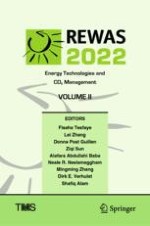The reliance on fossil fuels for energy is unsustainable and has released an unprecedentedamount of carbon dioxide into our atmosphere. The continual research and developmenteffort into clean and sustainable energy technologies is of paramount importance toensure the responsible progress of human civilization and innovations. This collection,with authors representing industry, government, and academia, focuses on energyefficient technologies including innovative ore beneficiation, smelting technologies,recycling and waste heat recovery, and emerging novel energy technologies. Thesymposium also covers various technological aspects of sustainable energy ecosystems,processes that improve energy efficiency and reduce thermal emissions.Topics include:
• Renewable Energy and Combustion Technologies
• Energy Efficiency, Decarbonization and CO2 Management
• Thermal Management and Hydrogen Technology
